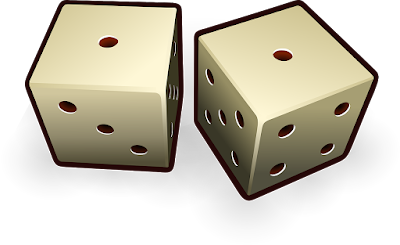Experienced calculus tutor - online and in-person. Schedule an affordable online calculus tutoring session.
Wednesday, October 26, 2016
About the theory of the probability I
People manifested interest and curiosity for probability and hazard since ancient times. The practice of the simple gambling games, the drawing, the fear and worry - which were inevitable in a world dominated by the whims of the gods - all of these make us believe that people back then, were forced to think over the random probability and fate and on something that happens by accident, even that their reasoning was very simple and wrong, if we judge by our moderns standards today.
Is very strange that the mathematical theory of the probability has a well defined beginning that is easy to recognize. It was born in France more than three centuries ago in 1654. Antoine Gombauld, a distinguished French men, which was Knight of Mere, Sire of Baussay, was admired back then for his advices full of wisdom about the subtle things of life and also for his charming personality. Without no doubt he spent some of his time in the gambling houses and he had a strong curiosity for the gambling games.
Back then was a famous gambling game which was played by a century and it's still played today. Let's describe the game now: "the bank" which is the professional player or the gambling house management, offers to bet on equal chances that a player will get at least once the face with number six from four dice throws. It's somewhat easy to find that this game was slightly favorable for the bank and not for the player. We can check in fact that the bank will win on average in 671 times and loses in 625 times. However, the Knight of Mere was not interested in this game, but in a more similar complicated one. Let's say that instead of throwing just one dice we have a pair of dices. Now we need to ask ourselves as Antoine did back then: why is not favorable for the bank to bet that the player will get at least a double of six from 24 throws? Why was he interested in finding this? We probably because he discovered in this game example a contradiction between a result he got from applying some probability theory and a result which was somehow different and was given by an old rule of the players.
This rule determines in a dice game the critical number of samples or throws that is the number of throws from which the chances are changing from bad (for a smaller number of throws than this critical number) to favorable (for every number bigger than this critical number). The rule applied in this case says that the critical number of throws for a game with a single dice is four and for a game with a pair of dices is six times four which is twenty four. The multiple of six appears because by the rule if you throw two dices, then you have six times more ways of getting a result in comparison with the game with one single dice. So what was the finding of Antoine Gombauld, how did he do it to get a favorable result for this game and was 24 a number of throws which you can rely on in this game? You can find more by reading the next article. Thank you
Subscribe to:
Post Comments (Atom)

No comments:
Post a Comment